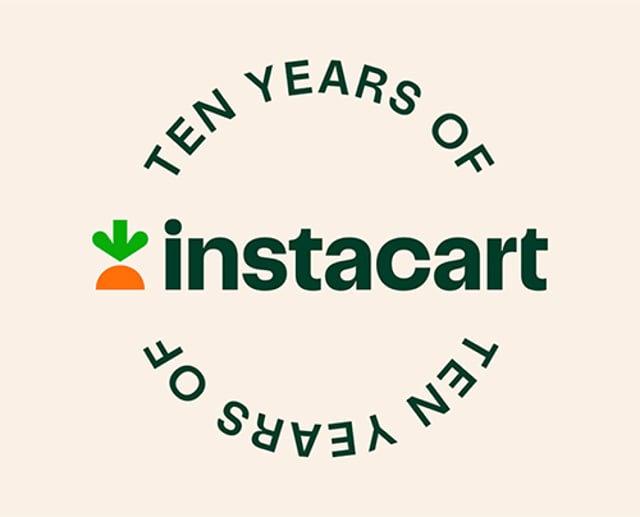Instacart takes first step to go public — and releases 10-year plan
Instacart’s ambitious roadmap for the next decade includes a possible initial public offering (IPO).
The online delivery giant has confidentially submitted a draft registration statement on Form S-1, a filing with the Securities and Exchange Commission (SEC) to register its securities in advance of an expected IPO filing. The registration statement is expected to become effective after the SEC completes its review process, subject to market and other conditions.
In addition, Fidji Simo, Instacart CEO, marked Instacart’s 10th anniversary (it was founded in May 2012) with a corporate blog post outlining the company’s strategy for the next 10 years.
Saying grocery is ready for its “next, tech-enabled chapter,” Simo stated that “the future of grocery belongs to those that invented it — not tech goliaths or newcomers trying to drive grocers out of business.” This is likely a shot at a group of large tech platforms including Amazon, a company Simo credited for understanding the importance of technology to retail better than anyone while also commenting online grocery is the biggest retail category not currently dominated by Amazon.
“Our vision is to build the technologies that can power every single grocery transaction,” said Simo. “And by doing so, we believe we can help our partners effectively compete and invent the future of grocery together.”
For grocery retailers, Simo said Instacart will provide the latest innovations and insights in e-commerce, fulfillment, in-store, and advertising, to enable them to build the “store of the future.” For consumers, Simo said Instacart will help retailers provide them access to “more affordable, nutritious food.”
Instacart also plans to offer consumers a fully personalized, omnichannel shopping experience that will let them discover products based on their personal tastes and dietary needs.
“At Instacart, we are developing technology specifically designed to make all of this a reality,” said Simo. “Building this technology will take time, and along the way we’ll have to navigate new challenges and volatile public markets. But we have a vision worth pursuing, and the team, technical experience, and commitment to achieve more together and generate long-term value for our partners, teams, and shareholders.”
Instacart as tech platform?
Although Simo’s blog post was critical of “tech goliaths,” Instacart has taken a number of steps that suggest the company wants to join major technology providers such as Amazon, Apple, Google and Facebook. In March 2022, Instacart launched Instacart Platform, which offers a range of enterprise technologies (such as e-commerce storefronts and fulfillment solutions) retailers can use a la carte or as a suite.
Throughout 2021, Instacart made several other moves in this direction. In January, Instacart introduced a new model for its Instacart Pickup curbside service — Partner Pick. Through Partner Pick, a retailer’s employees utilize Instacart’s customizable pickup technology to fulfill Instacart Pickup orders.
And Fidji Simo, who had been serving as VP and head of the Facebook app, assumed the position of Instacart CEO in July. That month also saw Instacart unveil the first phase of its micro-fulfillment initiative, designed to bring automated technology solutions to retailers across the U.S. and Canada. And in October, the company acquired FoodStorm, an order management system provider whose technology enables end-to-end order-ahead and catering services for grocery retailers.







